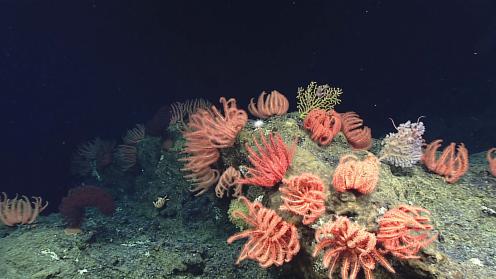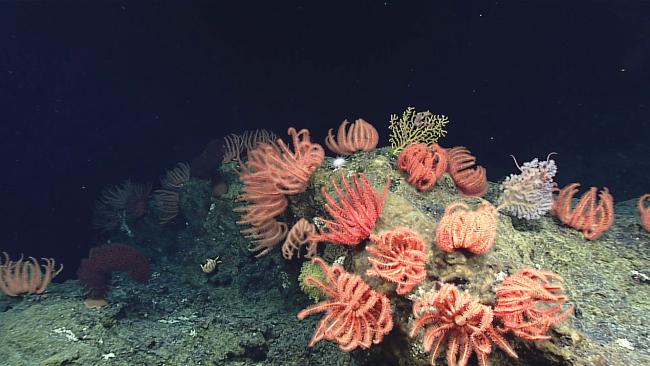About
Standing at a crossroads, the Authority needs to balance or resolve competing interests and approaches toward commercial deep-sea mining, especially in light of the announcement that a company has initiated a process to apply for exploration licenses and commercial recovery permits under US legislation, potentially undermining international law.
Final report
Summary report 17–28 March 2025
All coverage
The work of the International Seabed Authority (ISA), in particular its current focus on developing a regulatory framework for the commercial exploitation of deep-sea mineral resources, has been attracting increasing interest and controversy over the last few years. Policymakers, the environmental community, deep-sea mining companies, the media, and the general public are increasingly involved in the debate over the future of deep-sea minerals, expressing divergent viewpoints.
To date, 32 countries have expressed support for a moratorium or precautionary pause on deep-sea mining. They underscore the challenges the ocean faces, including pollution, overfishing, biodiversity and habitat loss, acidification, rising water temperatures, and climate change, and the need to protect these largely unknown deep-sea ecosystems, prior to authorizing destructive, extractive activities.
On the other hand, some ISA members have expressed interest in commercial deep-sea mining, opining that a robust regulatory framework can mitigate negative consequences, including environmental ones, and provide a sustainable stream of minerals, such as nickel, manganese, cobalt, and copper.
The ISA, as the body responsible for organizing and regulating all mineral-related activities in the seabed beyond the limits of national jurisdiction, is attempting to balance these concerns, including through the development of the “Mining Code,” which is the set of rules, regulations, and procedures to regulate prospecting, exploration, and exploitation of deep-sea minerals.
Negotiations during the first part of the 30th annual session of the ISA centered around the development of regulations for the commercial exploitation of deep-sea mineral resources. Delegates continued negotiating a consolidated text of the draft exploitation regulations, which was introduced at the first part of the 29th session. Among other issues, they focused on: provisions for the protection and preservation of the marine environment; the inspection mechanism; the environmental impact assessment process; the financial model; equalization measures; environmental externalities; coastal state obligations; underwater cultural heritage; and test mining.
The ISA Council, through its decision ISBA/28/C/24, noted that it intends to continue the elaboration of the exploitation regulations with a view to their adoption during the 30th ISA session in 2025. Some delegates think that, given the current level of development in the negotiations, they will either need to make significant, rapid progress or take a decision on the way forward.
The meeting’s agenda further included an item on “the consideration and adoption of a process for the consideration and approval of applications for plans of work for exploitation by the ISA in the absence of adopted regulations on exploitation of mineral resources in the Area” (the seabed, ocean floor, and subsoil beyond the limits of national jurisdiction).
The 30th session of the ISA will be held in two parts in March and July 2025. Part I included meetings of the Legal and Technical Commission (3-14 March), held behind closed doors, and the Council (17-28 March). The Council consists of 36 ISA members. All meetings take place at ISA headquarters, in Kingston, Jamaica.
The Earth Negotiations Bulletin (ENB) writers for this meeting were Asterios Tsioumanis, Ph.D.; Tomilola Akanle Eni-ibukun, Ph.D.; and María Ovalle. The Digital Editor was Ángeles Estrada. The Editor was Pam Chasek, Ph.D.
View past and future events
Past event
23rd Annual Session of the International Seabed Authority
Past event
1st Part of the 24th Session of the International Seabed Authority
Past event
2nd Part of the 24th Session of the International Seabed Authority
Past event
1st Part of the 25th Annual Session of the International Seabed Authority (ISA)
Past event
2nd Part of the 25th Annual Session of the International Seabed Authority (ISA)
Past event
1st Part of the 26th Annual Session of the International Seabed Authority (ISA)
Past event
27th Session of the Assembly of the International Seabed Authority (ISA-27)
Past event
1st Part of the 28th Annual Session of the International Seabed Authority (ISA)
Past event
2nd Part of the 28th Annual Session of the International Seabed Authority
Past event
3rd Part of the 28th Annual Session of the International Seabed Authority
Past event
1st Part of the 29th Annual Session of the International Seabed Authority
Past event
2nd Part of the 29th Annual Session of the International Seabed Authority
Past event
1st Part of the 30th Annual Session of the International Seabed Authority
To receive free coverage of global environmental events delivered to your inbox, subscribe to the ENB Update newsletter.

